Part 1: What is a Plant Forward Diet?
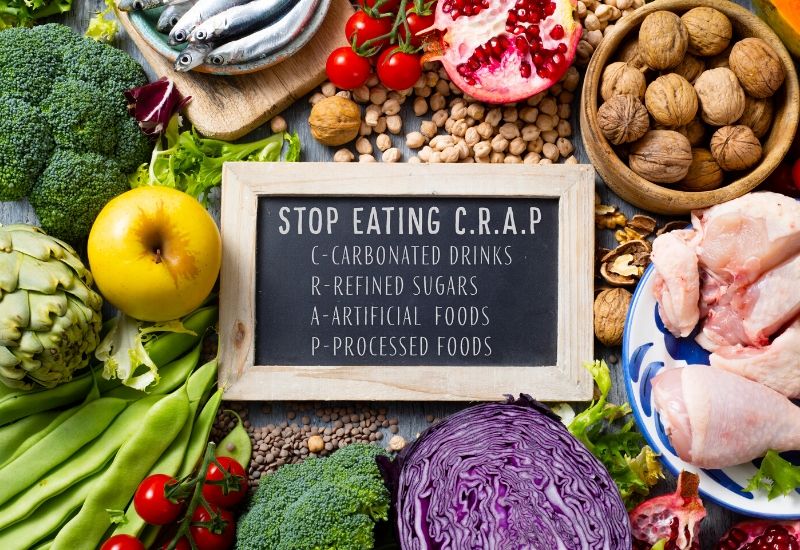
While the diet term “Plant Forward” is a fairly intuitive concept based on the name, there is still some confusion. I see people toss around the terms plant based and plant forward along with vegan and vegetarian. While there are a lot of commonalities between the diet types, there are also some distinct differences. And that is what I will cover in this post today.
This is also the first in an 8 part series that makes up the 4-Week Eat More Plans Challenge. Through this challenge, I want to give you the ins and outs so that you have a solid foundation to know exactly how to unprocess your diet and eat more plants! There are 8 lessons in this challenge and I encourage you to go through two per week and let the information really set in and give yourself time to take action.
Eventually, there will be an email series that will guide you through the information, but for now, we’ll just share information in the private Facebook group.
Here is what you have to look forward to in this challenge:
- Welcome: What is a Plant Forward Diet <== You are Here
- Setting up Your Plant Forward Pantry
- When Organic Food is Worth the Cost
- Calculate How Much Protein YOUR Body Needs
- The Best Sources of Traditional & Plant Based Proteins
- Preventing Food Waste with Proper Food Storage
- Which Plants Can Cause Bloating and Inflammation
- Cultivating Sustainable Healthy Habits
Are you ready? I hope so because we’re getting started right now! And please don’t hesitate to reach out with any questions at all! You can always reach me at teresa@teresamariewellness.com.
What is a Plant Forward Diet?
While these diets may sound the same, there are some key distinctions that make them unique. Let’s get you a clear definition of what type of diet you currently follow or are considering adopting. Here you have it in a nutshell:
- Plant Forward Diet: A dietary pattern of consuming unprocessed or minimally processed foods such as fruits, vegetables, whole grains, beans, legumes, nuts, seeds, healthy fats from plants, herbs and spices as well as responsibly produced animal products in small quantities.
- Plant Based Diet: A dietary pattern of consuming unprocessed or minimally processed foods such as fruits, vegetables, whole grains, beans, legumes, nuts, seeds, healthy fats from plants, herbs and spices exclusively and does not include any animal product or byproduct.
- Vegan Diet: A dietary pattern of consuming foods such as fruits, vegetables, whole grains, beans, legumes, nuts, seeds, healthy fats from plants, herbs and spices exclusively and does not include any animal product or byproduct including meat, dairy and eggs.
- Vegetarian: A dietary pattern of consuming foods such as fruits, vegetables, whole grains, beans, legumes, nuts, seeds, healthy fats from plants, herbs and spices and allows protein from animal sources like dairy and eggs only.
Key Distinction: All of these diets are based on a foundation largely consisting of fruits, vegetables, whole grains, beans, legumes, nuts, seeds, healthy fats from plants, herbs and spices. The difference between Plant Forward/Plant Based diets versus Vegan/Vegetarian diets is the processing and preparation of the food. Plant Forward/Plant Based diets have an emphasis on minimally process and unprocessed foods. By contrast, Vegan/Vegetarian diets traditionally have a larger emphasis protein sources sources and often include processed meat- substitutes.
Which of these style of eating is the best?
Is one better than the other? Well that depends on your body, lifestyle, and personal ethics. But let me be clear, THEY ARE ALL BETTER THAN THE STANDARD AMERICAN DIET. Putting an emphasis on eating more fresh fruits, vegetable, whole grains and other gifts from the earth is a sure fire way tot improve your health. You really can’t go wrong here.
Benefits of Plant Forward Eating
Yes: all these diets are good for you. Eating more plants in any form will all reduce inflammation and chronic disease, support optimal energy and weight, as well as reducing premature mortality and increasing longevity.
That said, personally, I’m an advocate of the Plant Forward Diet for the following 3 reasons reasons:
- More and more studies are showing that it’s the ultra-processing of foods that are responsible for the general over-consumption of food, which leads to numerous chronic health conditions today. Whether it’s plant based or animal based, if it was born from a lab, it should be limited. I am an advocate for limiting ultra-processed foods.
- I’m not a fan of the all or nothing approach, it’s scary. When you declare the absolute exclusion of certain foods, it can be difficult to sustain for the long haul. I am an advocate of sustainable healthy habits.
- Absolute food group exclusion can also serve as a barrier and prevent someone from ever starting. If the eternal rules and restrictions may automatically turn someone off, let’s remove them. I am an advocate of getting started somewhere.
My goal is to encourage more people to unprocess their diets and eat more plants (and less animals) by adoption a Plant Forward Diet. Consider Plant Forward eating the “gateway diet” to a healthier lifestyle. It’s not scary, anybody can do it.
If it leads to a Plant Based Diet one day (which is arguably better for the human body and the planet) that’s awesome. But right now, getting started somewhere is most important.
How to Adopt A Plant Forward Diet
In theory, it’s so simple! In practice, it takes some attention, education and pattern setting to see sustainable results. And that is why you’re here. I’ve included a chart here with all of the foods you can and should enjoy in abundance and in moderation on a Plant Forward Diet. I’ve also included a list of what to limit and avoid.
Download and print out this chart and start to think about which foods you want to eat more often. Also consider how you can replace some of your processed foods with whole foods.
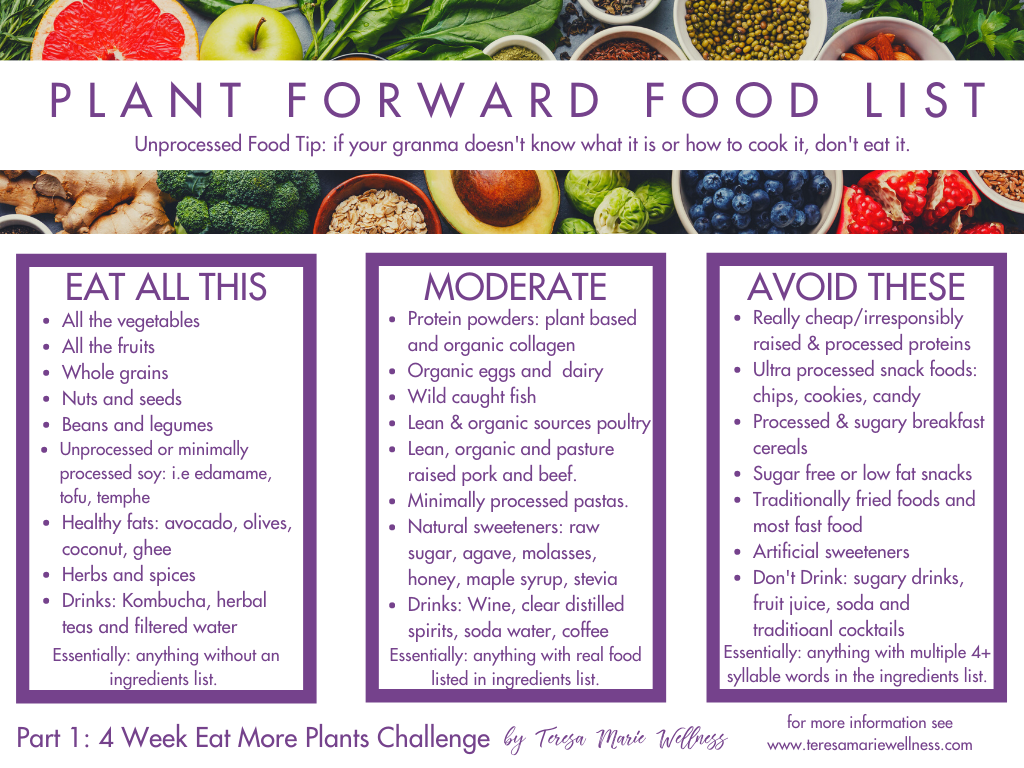
Clean & Colorful Recipe Guides
If you’d like more inspiration than a list of foods I have Clean (Unprocessed) & Colorful (Plant Forward) recipe tools for you! I also own the Clean & Colorful Kitchen in San Diego where we cook plant forward meals for a small pool of amazing clients every weekend.
And I’ve taken the best of those recipes and put them into incredibly user friendly guides for you. You can get started with Plant Forward Basics. I’ll also be adding more to the collection each month.
In Summary & Next Steps
There you have it! Exactly what is and why you’ll love adopting a plant forward diet. Here’s what you should do now:
- Print your Plant Forward foods list. If you are signed up for the 4-week challenge, get a small binder or folder to store all your printable action sheets (including your 4-week tracker).
- Order a Clean & Colorful Recipe guide if that’s valuable and useful for you.
- Let the information sink in. Explore your kitchen and see what you already have and what you need to start adding. Also start to consider, what needs to go…
- Talk to someone! Whether it’s in your family, a close coworker or BFF. You can even post in the Challenge Series community. But sharing your thoughts, learnings and ideas as you begin to make a diet transition can help you process the information and make sustainable change.
Up next in the 4-week Eat More Plants Challenge: Setting up your Plant Forward Pantry. If you’re not signed up for the free challenge yet, you can do that right here!
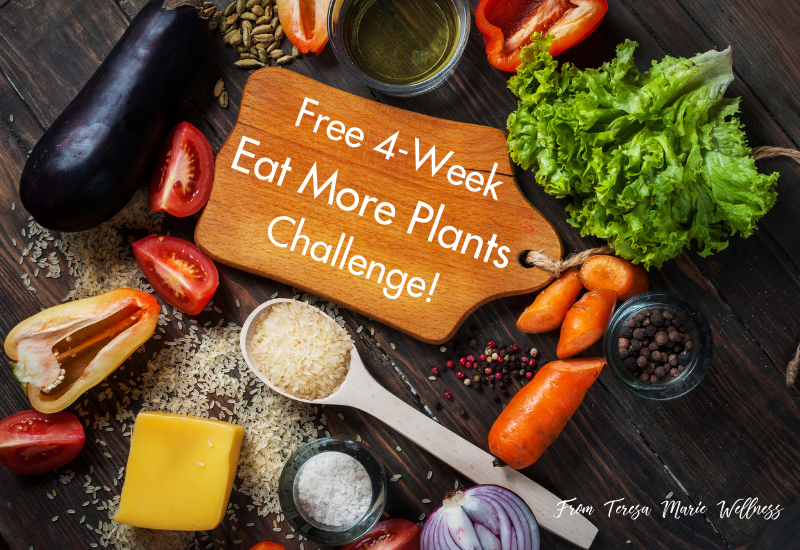
There you have it! You’re well on your way to adopting a Plant Forward diet and feeling the amazing benefits!
About The Author
Teresa Howes
I’m a board certified holistic nutritionist, certified personal trainer, plant forward & flexatarian lifestyle enthusiast and self proclaimed Veggie Ninja. I’m here to inspire and illustrate how delicious, simple and fun healthy living can be!
Related Posts
Gluten Free Acorn Squash Flatbread Recipe
I am so excited to share this unique Acorn Squash Flatbread recipe with you! As…
December 6, 2021Cancer Fighting Smoothie Recipe
I do think it’s aggressive to title this post: Cancer Fighting Smoothie Recipe…
July 25, 2021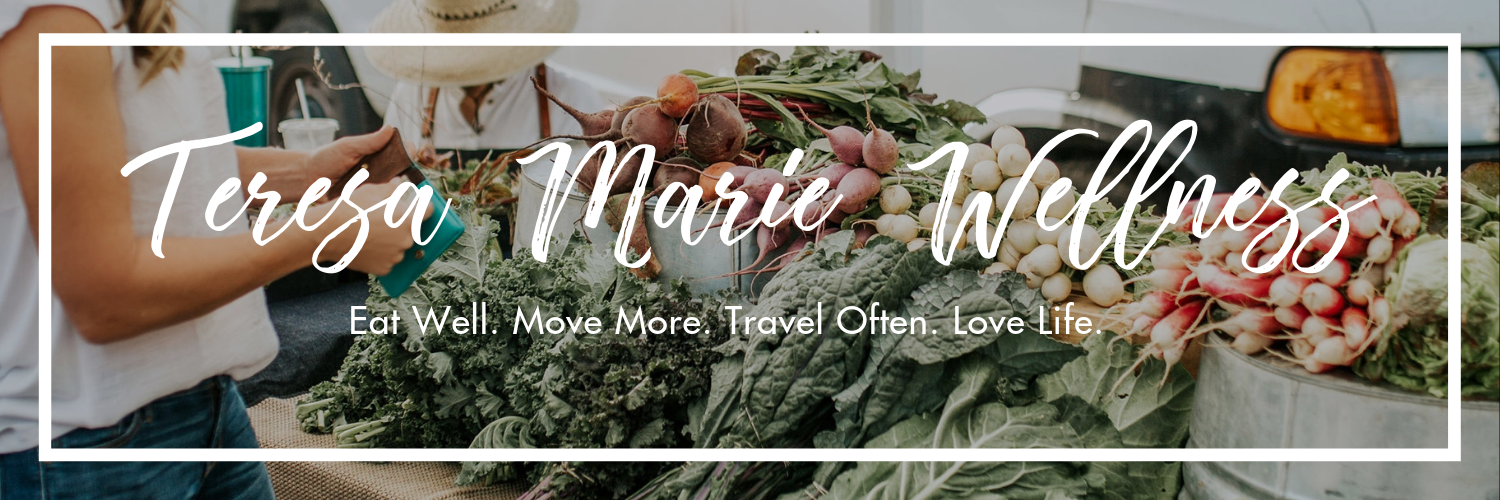
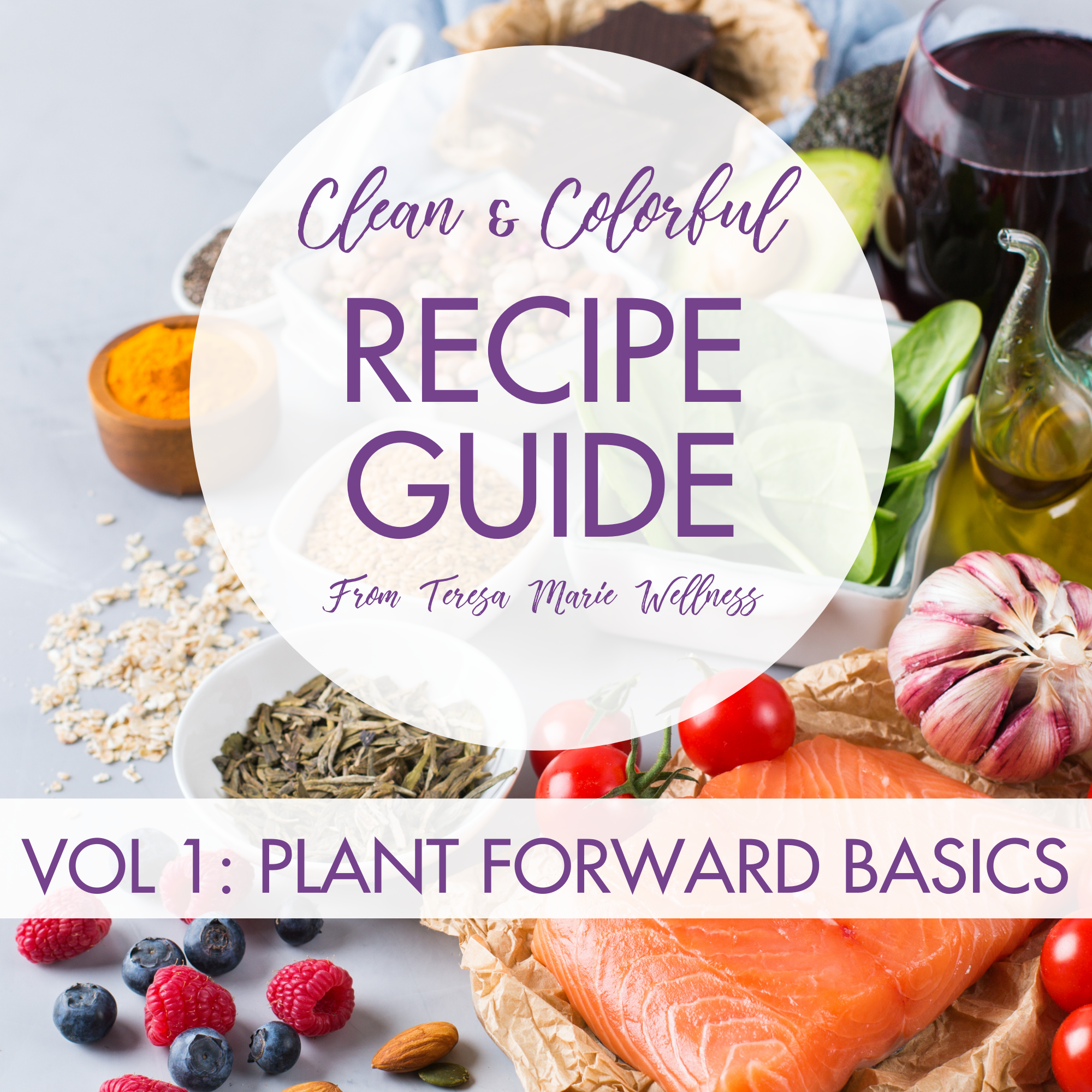


Adopting a Plant Forward Diet | Teresa Marie Wellness | 31st Oct 19
[…] you considered adopting a plant forward diet and you don’t quite know where to start? Awesome, I’m here with 6 steps to solid […]